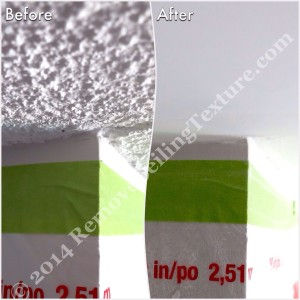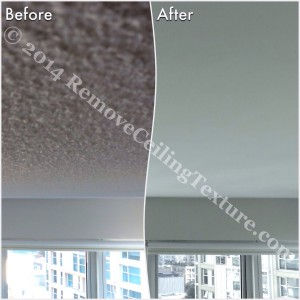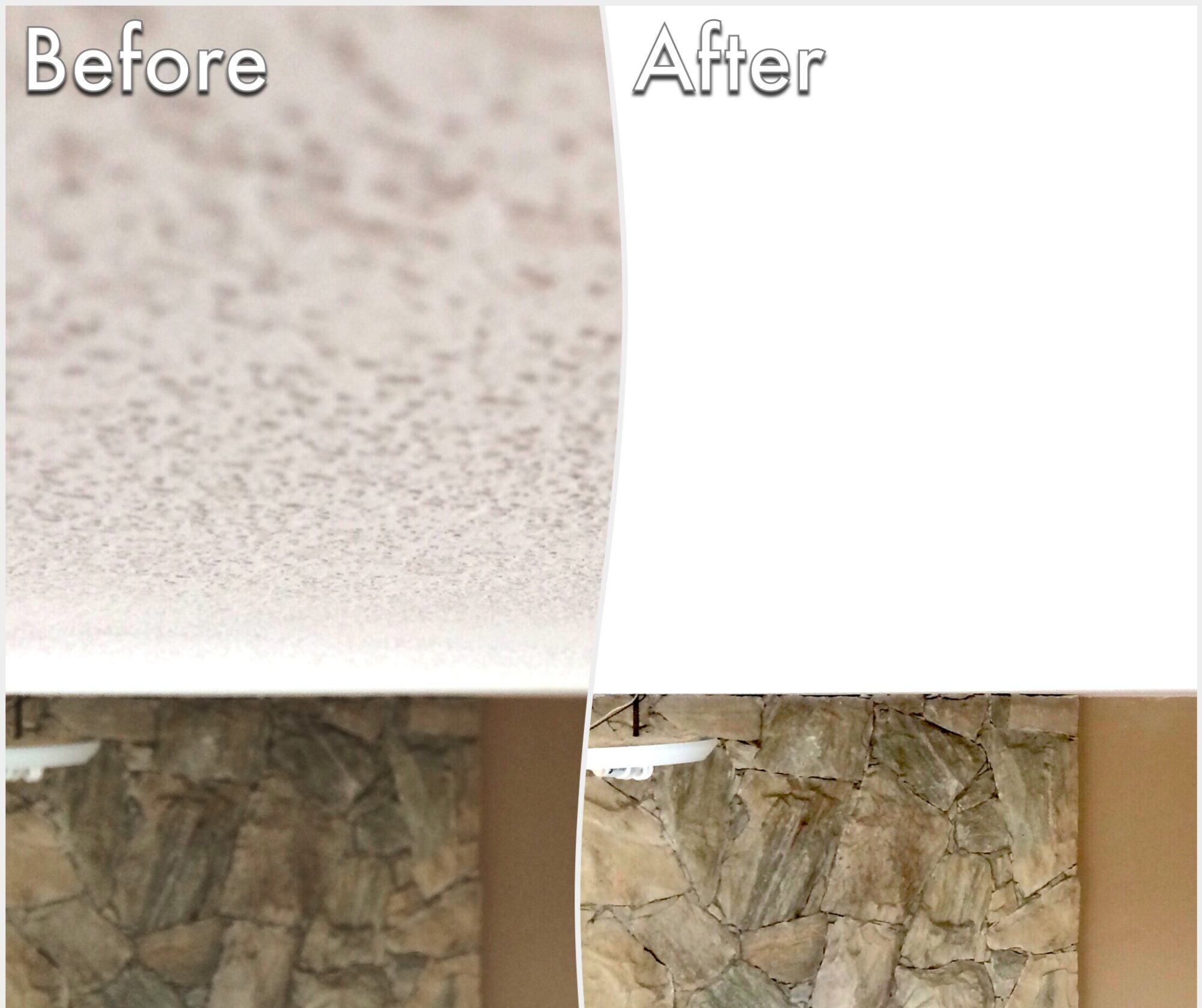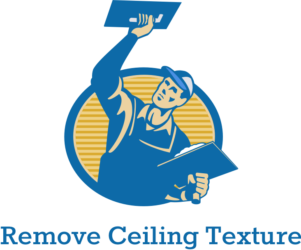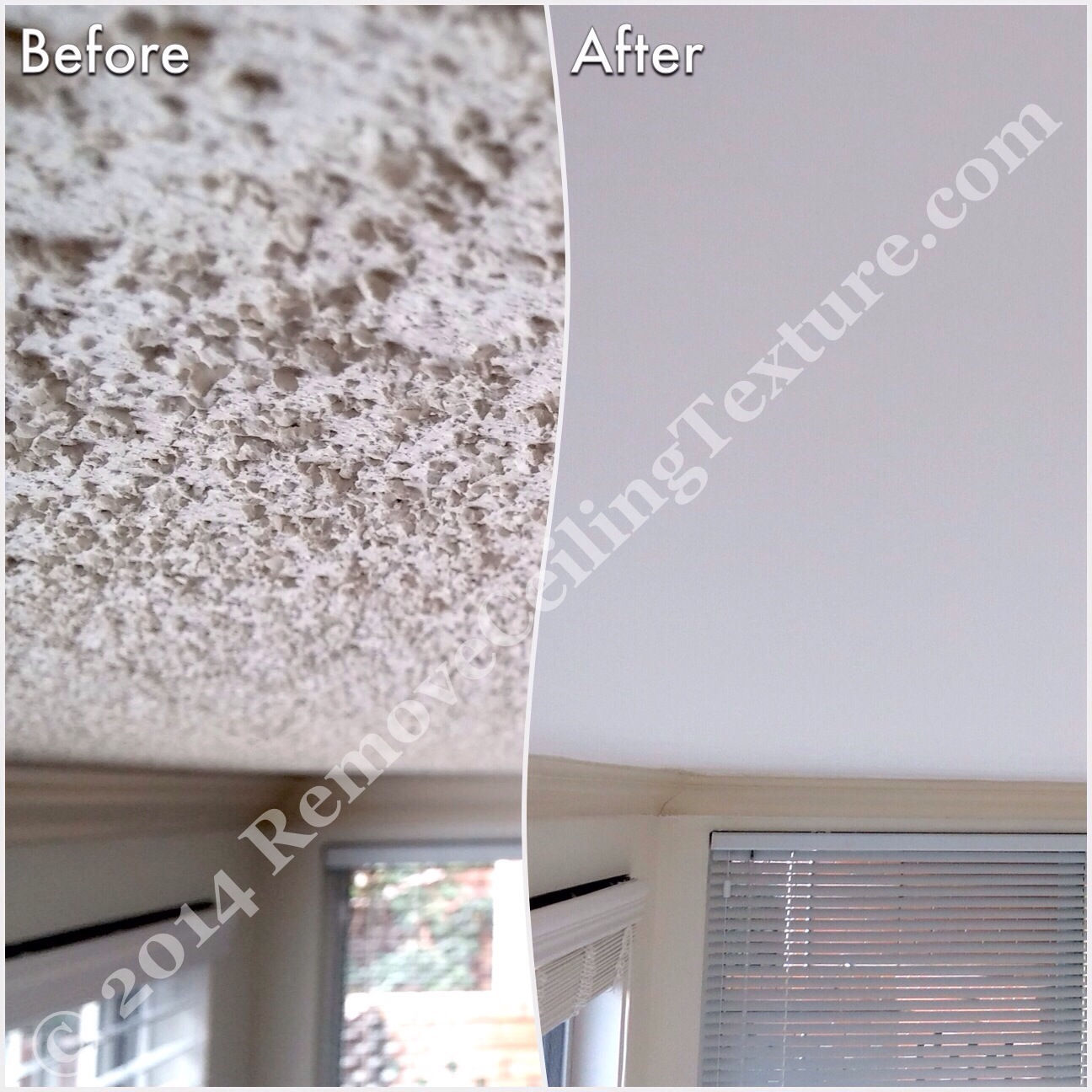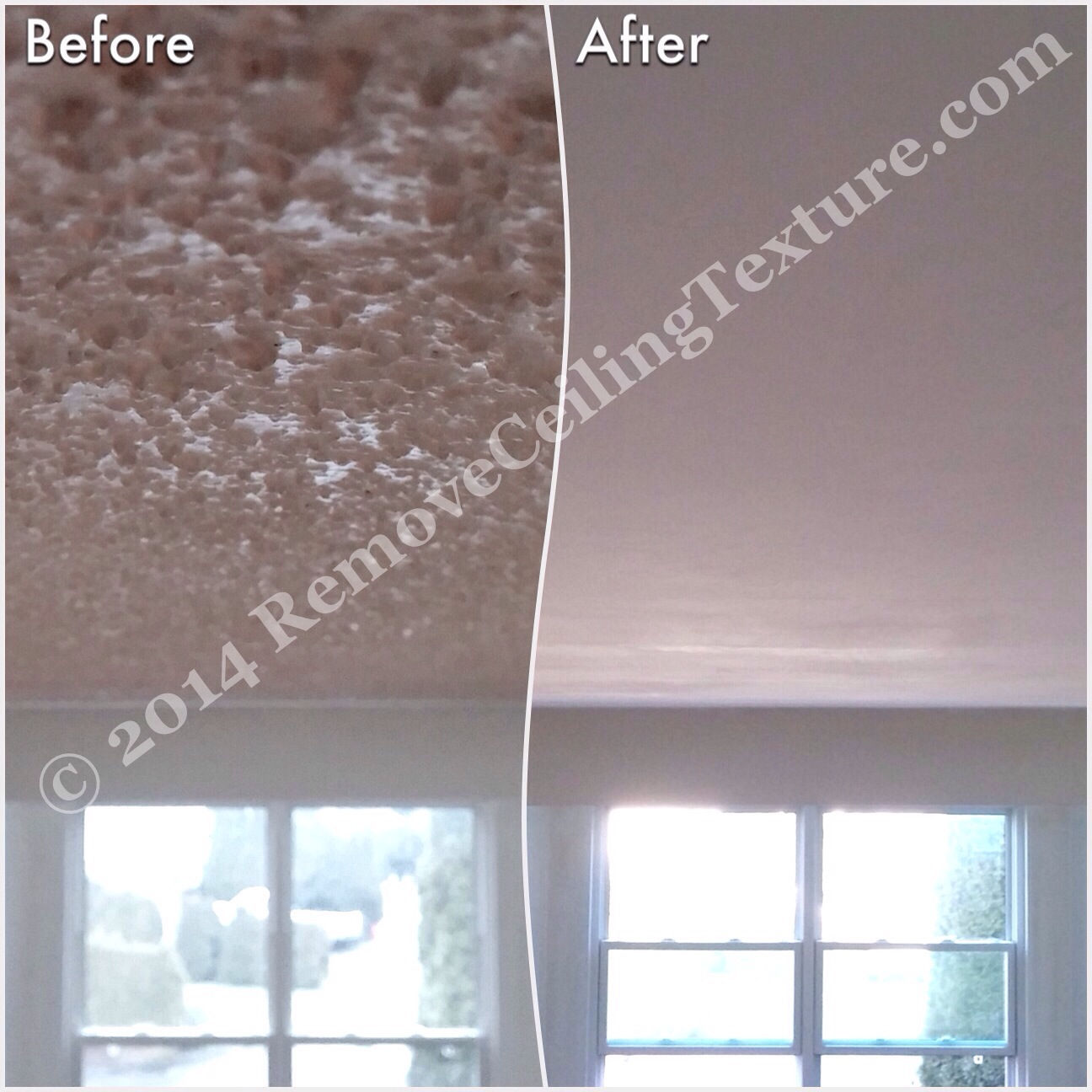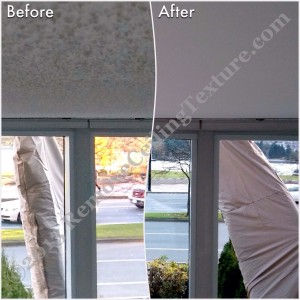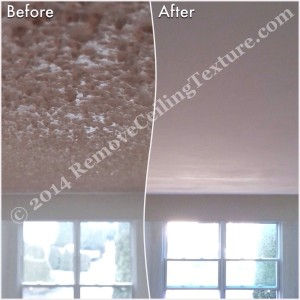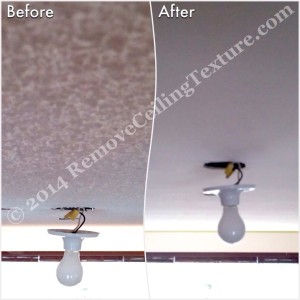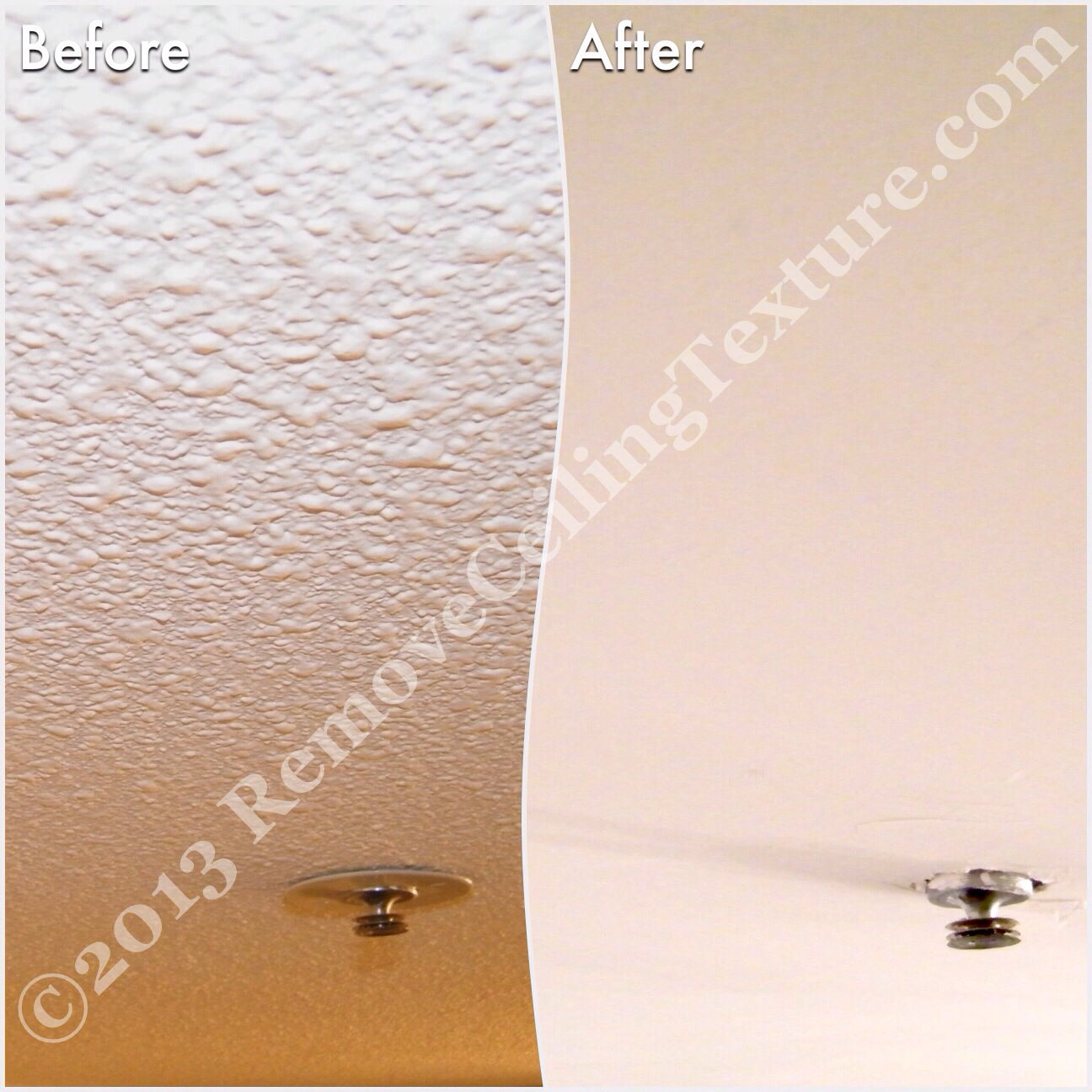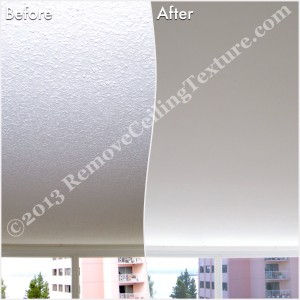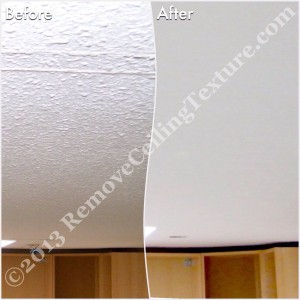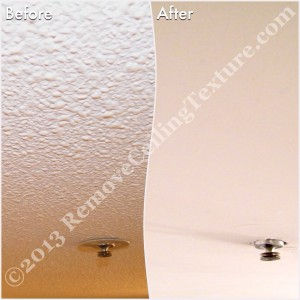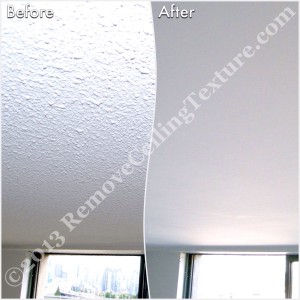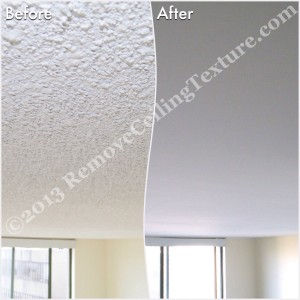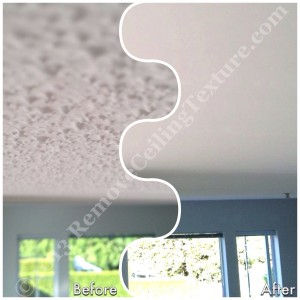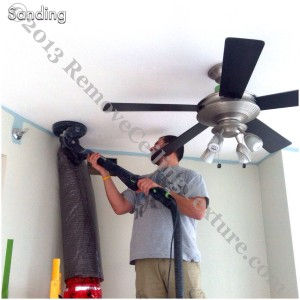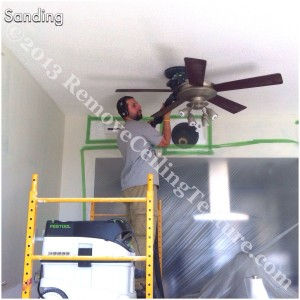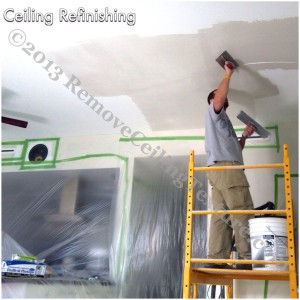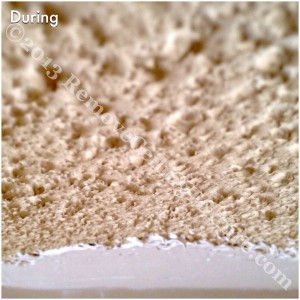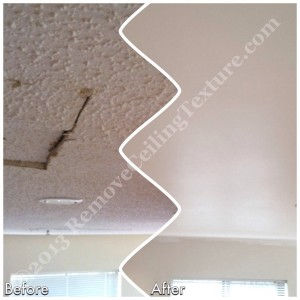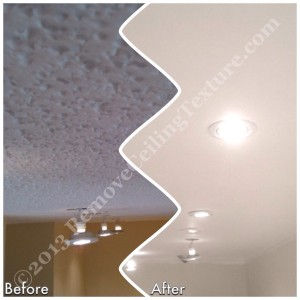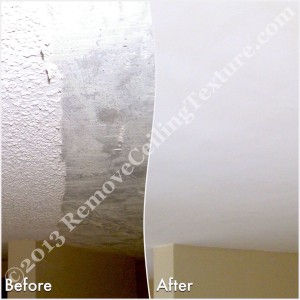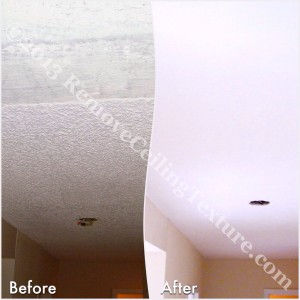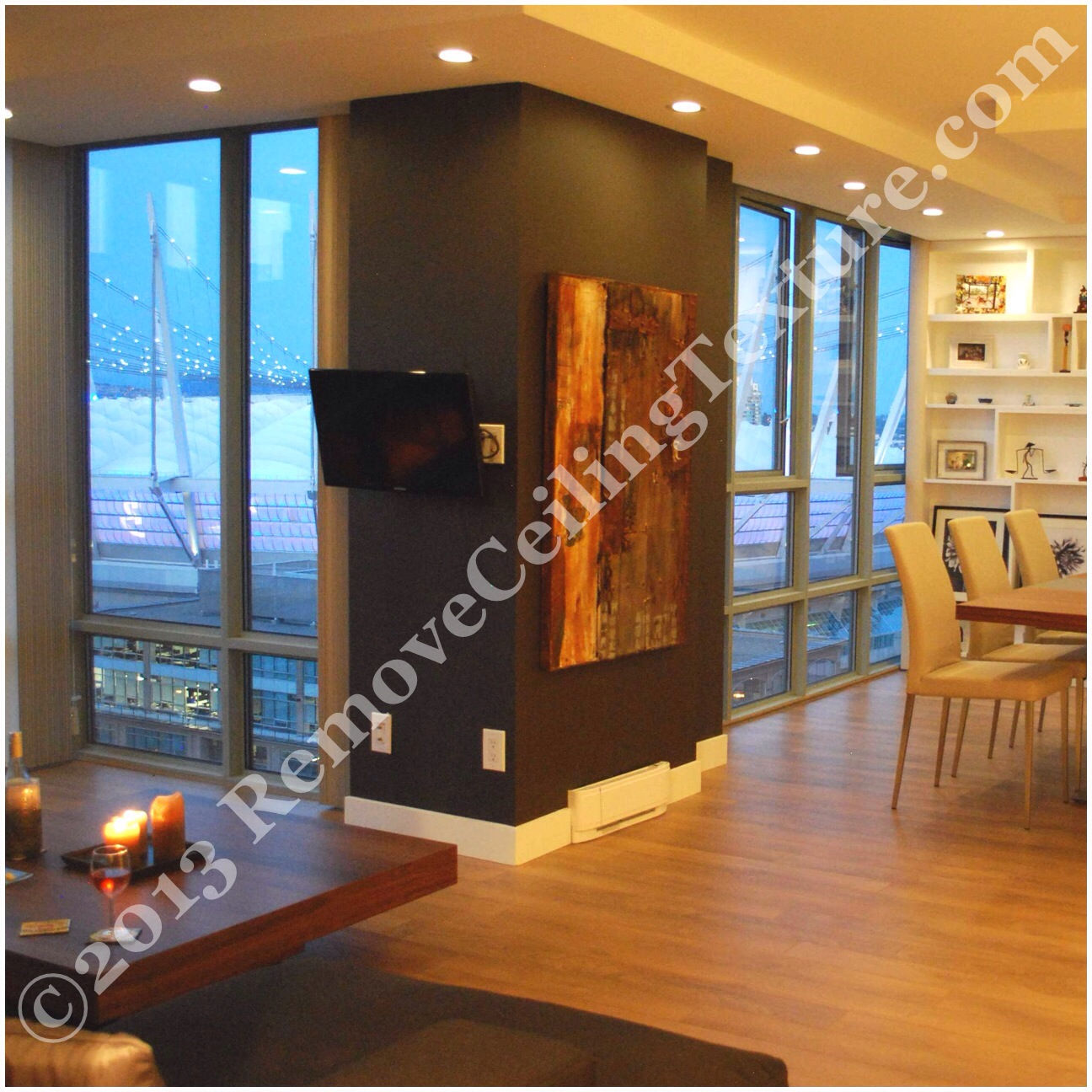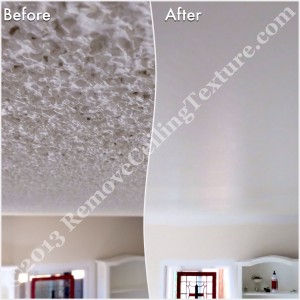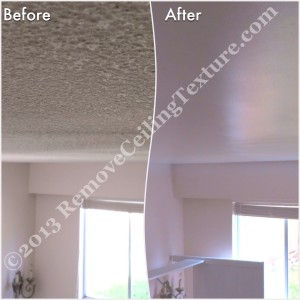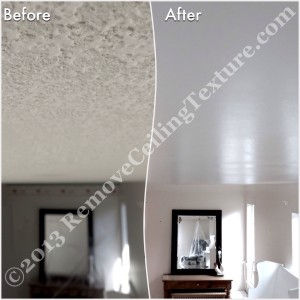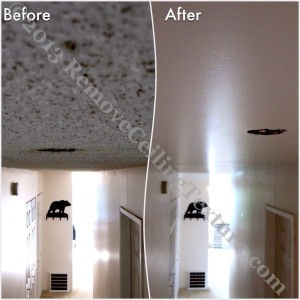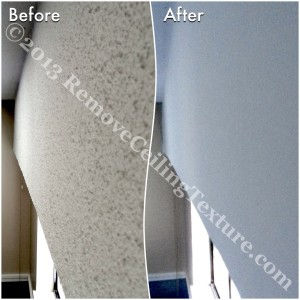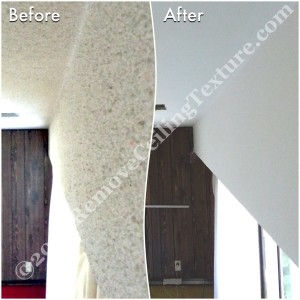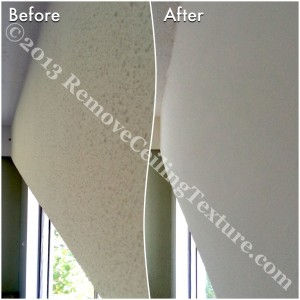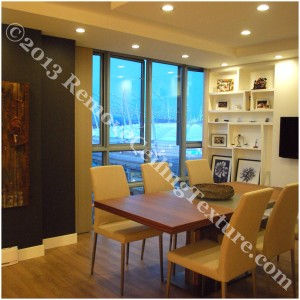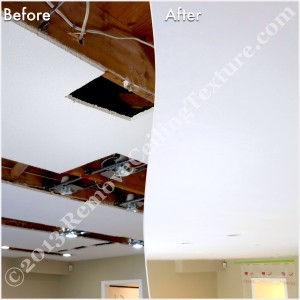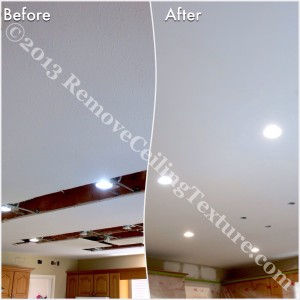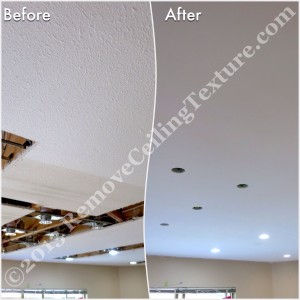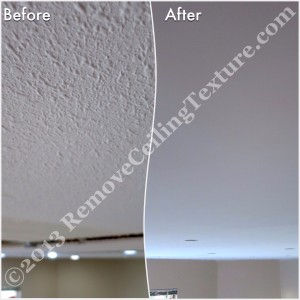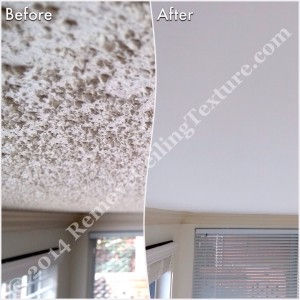
If your home was built from about 1950 onwards, there’s a good chance you have textured ceilings, also known as popcorn ceilings or stippled ceilings. It’s even being used today in the countless highrises sprouting from the earth like fungi. You might think, wouldn’t they be able to sell the units for more money if the ceilings were smooth and actually looked finished? Yes, they most likely would, but the problem is that old adage: time is money. Textured ceilings are quick and cheap and they need to sell the units as quickly as possible. This keeps us at RemoveCeilingTexture.com quite busy.
The Nitty Gritty of Textured Ceilings
So let’s break it down. What are the arguments for and against textured ceilings?
“Textured ceilings are quick and cheap to build.”
This argument really only works for the developer. But this is about you, the homeowner.
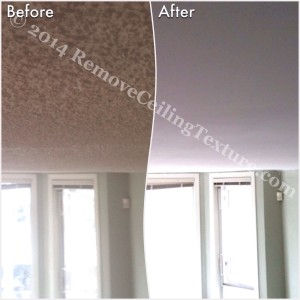
You’re likely not pocketing the savings the developers made by spraying the
texture. Do you know what else is quick and cheap? Leaving the concrete floors unfinished and not painting the walls. How many developers do that? For some reason textured ceilings have become almost an industry standard and people put up with it.
“Textured ceilings mute sound.”
If you live in a modern condo building, the texture is not making a difference in sound transmission. Generally, you shouldn’t be able to hear your neighbours walking around.
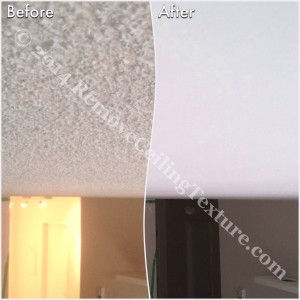
However, if your upstairs neighbour insists on channeling her inner Victoria Beckham by walking in heels at all hours, textured ceilings will not make one iota of difference. You’re going to hear that clickety-clack whether or not you have textured ceilings. Likewise, the creaks and groans of an older home are going to come through regardless of the texture on your ceilings. The sound may not even be coming through the ceilings. If walls are missing insulation, sound will travel through. Unless you have a seriously sound proofed room that can silence a nine-year old boy and his drum set, you’re going to get some sound transfer.
The other sound issue people talk about is echo within a room.
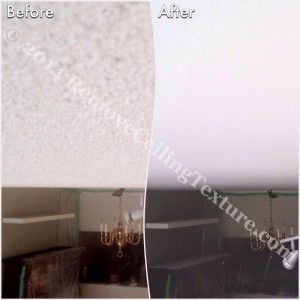
Echoes occur when sound waves bounce off of hard surfaces such as walls and ceilings, multiple times. It’s true, if you have an empty room with no furniture, textured ceilings will slightly dampen echoes. But once you add softer components such as sofas, chairs, beds, carpets, rugs, etc., the sound waves will be absorbed by these softer items and won’t create an echo. So your textured ceilings are not helping.
“Textured ceilings don’t bother me.”
Are you sure about that? They may not bother you visually, but what they harbour could be affecting your health. Asthma, allergies and other respiratory problems can be aggravated by the dust and allergens that are present in every home. In most homes you vacuum, you dust…problem solved, right? Not so fast. The dust gets stuck in the nooks and crannies of textured ceilings. It can then fall back down at its leisure, making your symptoms worse.

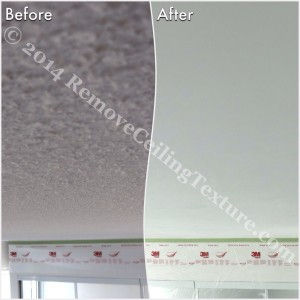
Smoothing Out the Nitty Gritty
The good news is that you’re not stuck with textured ceilings. From penthouse condos to heritage homes and everything in between, we can provide smooth ceilings for pretty much every type of dwelling (we’ve yet to do a hobbit-hole, though).
At RemoveCeilingTexture.com, our name only tells part of the story. Removing the ceiling texture is only the first step to smooth ceilings. Once the texture is gone, you’ll often see inconsistencies in the ceilings. If you were to paint at this stage, they wouldn’t look very good. The next, crucial step is where our expertise really shines: resurfacing the ceilings. Our process will leave you with flawless, smooth ceilings that look fantastic.
Contact us today for a FREE QUOTE for getting rid of your textured ceilings. Send us an email, or call us at 604-420-7578.
